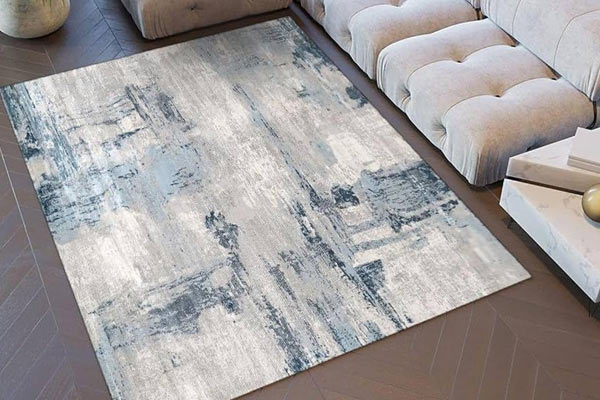A rectangular rug is a versatile floor covering that comes in various styles, colors, and materials. Typically defined by its shape, this type of rug plays an essential role in home decor and practical functionality. Rectangular rugs not only add a touch of elegance to a space but also serve a primary purpose of providing comfort underfoot and defining areas within a room, such as a living room or dining area.

Contents
Definition of Rectangular Rug
A rectangular rug can be defined as a flat textile product designed for use as a floor covering, typically characterized by its rectangular shape. The general characteristics of rectangular rugs include a variety of sizes, from small accent pieces to large area rugs, as well as a wide range of materials that may include natural fibers like wool, cotton, and jute, or synthetic fibers such as polyester and nylon. The design and texture of these rugs can vary significantly, contributing to their aesthetic appeal and functional attributes.
History and Origin
The origins of rugs date back thousands of years, with the earliest examples believed to have been created by nomadic tribes for practical uses, such as insulation and comfort in harsh climates. Rectangular-shaped rugs became popular as societies moved towards settled lifestyles and began developing structured living spaces. Over time, these rugs evolved from utilitarian items into sophisticated decor elements recognized for their beauty and craftsmanship. Cultural influences played a significant role in the development of various rug designs, including Persian, Turkish, and Oriental carpets, which further defined the rectangular rug’s appeal in modern-day interiors.
Uses and Benefits
Rectangular rugs serve various functions in daily life, from aesthetic enhancements to practical applications. They can significantly impact acoustics by reducing noise levels, offering warmth and comfort against cold floors, and defining spaces within open-concept environments. The benefits of utilizing rectangular rugs extend beyond their practical implications; they allow homeowners to express their style, create inviting atmospheres, and enhance the overall ambiance of interiors.
How to Choose and Use Rectangular Rugs
When choosing a rectangular rug, several factors should be considered:
Size
Select a size that fits the intended space. A common rule is to choose a rug that allows for at least the front legs of furniture to rest on it.
Material
Consider materials based on the rug’s intended use. For high-traffic areas, durability is key, while other spaces might benefit from softer textures or aesthetic appeal.
Color and Pattern
Choosing the right color and pattern can significantly impact the room’s aesthetic. It’s essential to consider existing decor to ensure harmony in design.
Placement
Placement can affect the visual flow of a space. Ensure the rug complementarily fits with surrounding furniture and decor elements.
Maintenance and Cleaning
Proper care and maintenance are critical to extending the lifespan of a rectangular rug:
Regular Vacuuming
Frequent vacuuming helps remove dust and dirt particles, preserving the rug’s materials and appearance.
Spot Cleaning
Address spills immediately with blotting rather than rubbing to prevent stains from setting into the fibers.
Professional Cleaning
For a deep clean, consider hiring professional cleaners specialized in rug care, especially for delicate fibers like wool or silk.
Rug Pads
Using rug pads can provide additional cushioning and prevent slippage, enhancing safety and comfort.
Conclusion
In summary, rectangular rugs are more than mere decorative elements; they serve multiple practical purposes in home environments. Understanding their definition, history, types, benefits, and maintenance can empower consumers to make informed choices that enhance their living spaces. With the right rug, one can achieve a blend of comfort, style, and functionality that elevates the overall design of any room.
